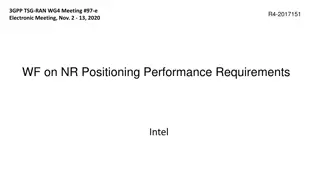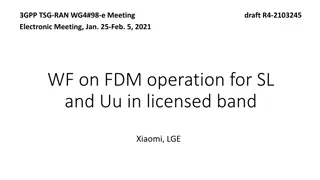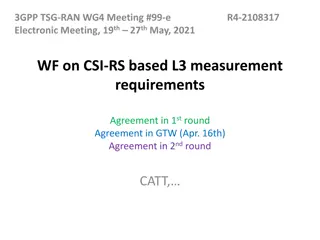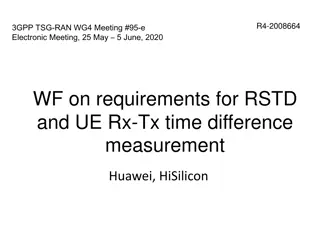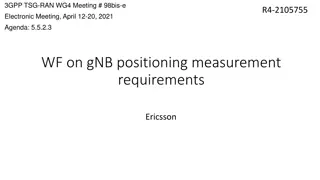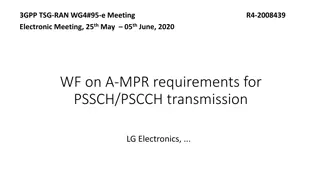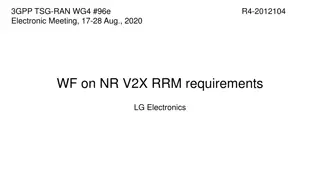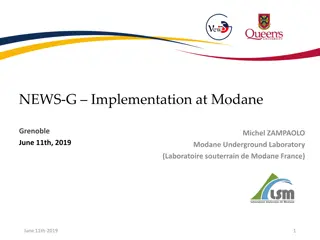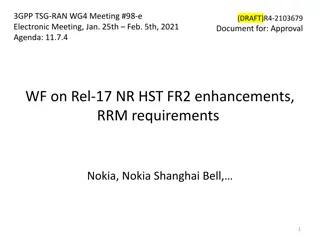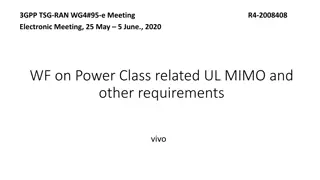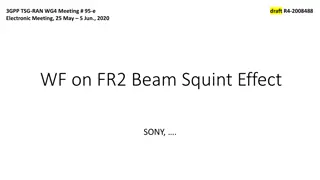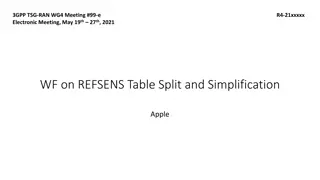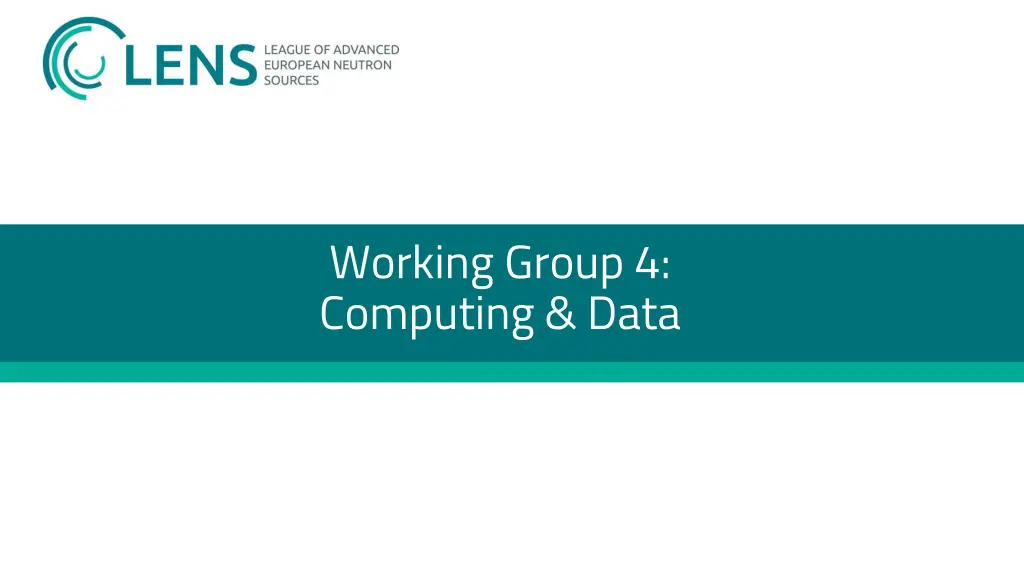
Machine Learning for Data Analysis in Computing and Data
Explore the importance of Artificial Intelligence (AI) technologies in computing and data, focusing on searching for patterns, discovering regularities, and enhancing analysis efficiency. Learn about EU funding opportunities in AI-related areas and the potential impact on various sectors. Dive into the world of Machine Learning for data analysis, including supervised and unsupervised learning techniques.
Download Presentation

Please find below an Image/Link to download the presentation.
The content on the website is provided AS IS for your information and personal use only. It may not be sold, licensed, or shared on other websites without obtaining consent from the author. If you encounter any issues during the download, it is possible that the publisher has removed the file from their server.
You are allowed to download the files provided on this website for personal or commercial use, subject to the condition that they are used lawfully. All files are the property of their respective owners.
The content on the website is provided AS IS for your information and personal use only. It may not be sold, licensed, or shared on other websites without obtaining consent from the author.
E N D
Presentation Transcript
Working Group 4: Computing & Data
Action Items from Action Items from Liblice Liblice General Assembly & Executive Board General Assembly & Executive Board All WGs All WGs shall deliver a timescale for their actions, to be presented at the next GA, together with the work that has been achieved so far LENS members recognize growing need for AI technologies in order to improve user services at neutron centers Define pilot projects to be persued Use output of planned joint workshop ILL/ESRF on AI WG4 Meetings Liblice General Assembly Garching (MLZ) Grenoble General Assembly
WG4 Subgroups and Speakers WG4 Subgroups and Speakers WG4: P. Mutti (ILL), S. F rster (MLZ) Instrument Instrument Control Control Systems Systems Artificial Artificial Intelligence Intelligence Technologies Technologies Automation & Automation & Robotics Robotics Joint Software Joint Software Webpage Webpage Open Data & Open Data & Data DOIs Data DOIs Computing, Computing, Data Data- -Processing Processing & & - -Analysis Analysis S. F rster (MLZ) G. Brandl (MLZ) C. Felder (MLZ) L. Moore (ISIS) J. F. Perrin (ILL) G. Brandl (MLZ) F. Akeroyd (ISIS) M. Brambilla (PSI) G. Exil (LLB) P. Mutti (ILL) J. Cooper (ISIS) G. Exil (LLB) L. Fernandez-Hernando M. Ganeva (MLZ) E. Jorgij (LLB) P. Mutti (ILL) E. Rantsiou (PSI) J. Wuttke (MLZ) L. Szentmiklosi (BNC) J. F. Perrin (ILL) C. Felder (MLZ) S. Fletcher (ISIS) E. Jorgij (LLB) T. Richter (ESS) N. N. (BNC) N.N. (BNC) T. Rod (ESS) M. Gonzales (ILL) E. Jorgij (LLB) M. Koennecke (PSI) A. Kaestner(PSI) A. Markvardsen (ISIS) L. Moore (ISIS) J. F. Perrin (ILL) S. Sayti (BNC) J. Wuttke (MLZ) S. Cox (ISIS) F. Bussmann (FZJ) E. Faulhaber (MLZ) D. Merkel (BNC) M. North (ISIS) A. Weber (MLZ)
Priority Action Artificial Intelligence (AI) Priority Action Artificial Intelligence (AI) 2. Why is it important? searching for patterns in data discovering regularities in data Make more accurate and faster analysis, use for experiment planning, data analysis and instrument control More efficient use of resources (time, training, resources) 3. EU funding opportunities AI-related areas: robotics, big data, health, transport, future and emerging technologies Robotics Digital skills
Machine Learning for Data Analysis Machine Learning for Data Analysis searching for patterns in data discovering regularities in data classifying into different categories use for data analysis and instrument control supervised learning classification unsupervised learning no categories known, clustering training datasets need to be preprocesses, sufficiently large and complex to provide testing ground for ML algorithms, software environments, hardware training of neural networks is computing intensive (e.g. NVIDIA DGX-2 for GPU computing at RAL) need for high level support teams
Priority Action: Artificial Intelligence Technologies Priority Action: Artificial Intelligence Technologies AI in explorative phase, but certain cases already clear: Case I: (GI)SANS neural network data analysis, much faster than 2D-fit Case II: Reflectometry model selection for data analysis, much faster than fit (runs on smartphone) Case III: Instrument Control suggest best instrument setup for particular experiment, pro-active failure detection Case IV: Noisy Data feature recognition, optimize experiment time
Priority Action: Artificial Intelligence Technologies Priority Action: Artificial Intelligence Technologies Actions: Coordinate Case-activities between facilities Share tasks, exchange ideas Share computing resources (particularly for training phase) Good collaboration opportunities with LEAPS ILL/ESRF/ISIS/DIAMOND-Meeting on AI November 12-14, 2019 (P. Mutti co-organizer) EU Horizon Europe common proposal with LEAPS in 2020-call
Actions Actions - - Open Data & Data DOIs Open Data & Data DOIs Disseminate facilities and EU-consortia (PANOSC, EXPANDS) data policies open data, data formats, data catalogues, data DOIs Proposal in Germany (DAPHNE) Establish common standards for data formats (NEXUS, MANTID) and DOI-schemes Common communication plans, material and data management Concrete action: provide recommendation for data format
Actions Actions - - Computing Data Processing & Analysis Computing Data Processing & Analysis Continue the SINE2020 WP10 workshops on data treatment software on an annual basis Continue to maintain and develop Mantid, SasView, BornAgain, QENS library, and MuhRec/KipTool Develop roadmap for the diffraction domain with a view on the SINE2020 Standards & Guidelines Concrete action: provide recommendation reduction and analysis tools Promote container solutions for software
Actions Actions - - Automation & Robotics Automation & Robotics Robots for automated sample changing and holding high-throughput SANS, stress diffractometer, cryogenic sample changing; also detector/camera holding Automated experiments robot connection & instrument control & data reduction for optimized experiments; also automated QR-code based sample recognition Link to WG3, Sample Environment Initiative to organize a workshop to collect ideas and needs participants from WG4, WG3 for sample environment and also scientists Connection with LEAPS
Actions Actions - - Instrument Control System Instrument Control System Establish standard protocol to facilitate interfacing user devices and sample environments with instrument controls at different facilities (NICOS, PINGUIN, EPICS) inline with the SECoP initiative for sample environment. Virtual experiments for users to simulate and plan experiments. Link with McStas 3D instrument view and collision detection
Actions Actions Joint Software Webpage Joint Software Webpage Establish joint software webpage recommended software for every neutron technique, link to software&download web pages Provide software training Link to WG1/2 dissemination&teaching Link to PaNData
Next actions Next actions ILL/ESRF/ISIS/DIAMOND-Meeting on AI November 12-14, 2019; WG4 meeting afterwards network projects e.g. joint software webpage LENS Network Project Selection Criteria? Demonstrate cooperation, put in Project Plans Project Ideas LENS Network Project EU-call? Proposal Call: summer 2020 e.g. AI

